A gorgeous picture book inspired by a traditional Central American Indigenous story about a snake with the power to bring the rain, told in lyrical language and evocative art, and subtly conveying an environmental theme.
Itzel listens as her nana tells the story of when the giant snake would be awakened from its sleep: “And first with a whisper that would rustle the leaves, and then with a deep thunderous cry, the giant snake would bring the arrival of the rainy season.” But now, since many no longer believe in the snake, her nana says, “It has returned to the place where the water is born.” Now, Itzel and her nana are desperate for rain to water their bone-dry crops. So Itzel decides she must find and awaken the snake herself. She sets out in the night alone, but soon she is joined by an ocelot, and a bevy of other jungle creatures in need of the rain. And Itzel worries, is she leading them on a fruitless journey?
Americas
Materials from the Americas
Putuguq And Kublu
In each new adventure, Putuguq and Kublu learn about an element of Inuit mythology from their Elders, sometimes using what they learn to get the best of each other!
Putuguq and Kublu are at their grandparents’ house for lunch―caribou stew, Putuguq’s favourite! Putuguq’s worn out (and stinky!) kamiik remind his grandparents of the story of the amautalik and the orphan, a traditional story about a little orphan who outsmarts a child-stealing ogress. Grandmother’s storytelling over lunch starts Putuguq’s imagination running wild….
After lunch, Putuguq and Kublu decide to act out the story their grandmother has just told. But, for Putuguq, this is no ordinary play. He is determined to prove his fearlessness to an unsuspecting Kublu… with a little help from his stinky socks!
There’s A Lion In The Forest!
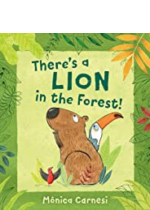
With a rhythmic text that begs to be read aloud, Mônica Carnesi’s clever tale illustrates the importance of not rushing to conclusions. Young readers will get a kick out of sleuthing along with the forest animals as they try to get to the bottom of this sweetly suspenseful mystery.
Tía Fortuna’s New Home: A Jewish Cuban Journey
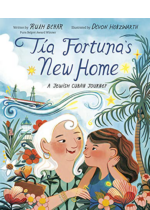
When Estrella’s Tía Fortuna has to say goodbye to her longtime Miami apartment building, The Seaway, to move to an assisted living community, Estrella spends the day with her. Tía explains the significance of her most important possessions from both her Cuban and Jewish culture, as they learn to say goodbye together and explore a new beginning for Tía.
With Lots Of Love
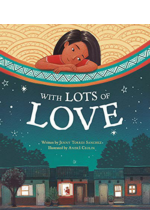
Rocio and her family move from Central America to the United States, leaving behind their extended family and many happy memories, but Rocio’s Abuela finds a way to send her something special for her birthday.
Snow Angel, Sand Angel
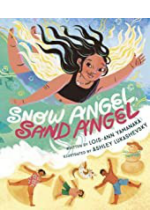
Claire has been surrounded by the deep blue waves of Hapuna Beach and the magnificent mountains of Hawai’i all her life, but has never, ever seen snow. When her father drives her and her family to the top of the Mauna Kea, she can’t help but to be disappointed…it’s not the winter wonderland she’s always dreamed of. And that’s what she wants, more than anything. But as Claire edges ever closer to the new year, she wonders if maybe– just maybe–she can delight in the special joys of winter in her own way–right there, on her Big Island of Hawaii.
Includes backmatter that captures the environmental culture of Hawaii, and will teach children not only about the local flora and fauna, but also the value of being environmentally friendly.
I Can See You
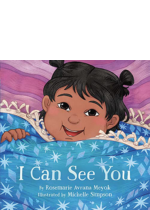
In this adorable book to be shared with babies and toddlers, mothers explore their love for their babies as experienced through the five senses. From the sound of a baby’s giggles to the smell of a kunik, this book celebrates the unique bonds shared between mothers and babies.
Marley And The Family Band
When Marley and her family move from Jamaica to Delaware, she knows life is about to change in big ways. And she’s got the perfect plan to help her and her siblings make friends: an outdoor concert for the whole neighborhood But when weather ruins their plans, she discovers help in the most unlikely places as her new neighbors quickly become the kindest of friends.
El nuevo hogar de Tía Fortuna
Cuando Fortuna, la tía de Estrella, tiene que despedirse de su antiguo edificio de apartamentos en Miami, The Seaway, para mudarse a una comunidad de vida asistida, Estrella pasa todo el día con ella. Su tía le explica el significado de sus posesiones más importantes, tanto de su cultura cubana como judía, mientras ambas se despiden y exploran un nuevo comienzo para la tía
Viento, Vientito/ Wind, Little Wind
My name is Wind / but everyone knows me / as Little Wind.” In this beautiful, poetic ode to the refreshing but sometimes dangerous force of wind, award-winning children’s book author Jorge Argueta describes–in English, Spanish and Nahuat–the power of air from the perspective of a mischievous youngster.
